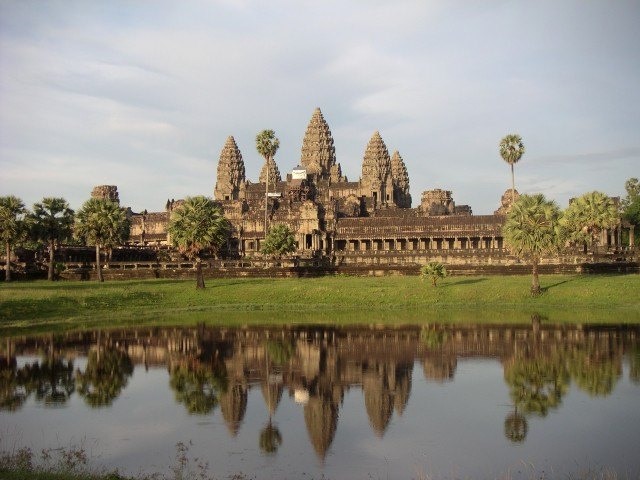Two Very Different Ways of Riding the Tour de France
I’d hardly ever say it to their faces, but as a scrawny distance runner I’ve constantly enjoyed watching muscle-certain decathletes operate their closing event, the 1,500 meters. They make it glimpse almost as really hard as the pole vault would be for me. Of training course, they don’t in fact have to race in opposition to center-distance experts. In biking, on the other hand, the sprinters, time-trialists, climbers, and all-arounders all contend in the same Grand Tours. Envision, for illustration, if Usain Bolt had to complete the marathon in a sure time restrict in purchase to start off the 100-meter closing the future working day. What would that acquire?
A pair of new reports in the Intercontinental Journal of Sports Physiology and Overall performance delivers a unique search at energy data collected by retired German sprinter Marcel Kittel, who in excess of the system of his occupation gained 14 Tour de France phases. Line that up following to a related review posted past calendar year demonstrating the electrical power info of Dutch rider Tom Dumoulin, an all-arounder who has received the Giro D’Italia and placed next all round in the Tour de France, and you have a unique window into the physiological needs of a Grand Tour from two really distinctive perspectives.
All three studies were led by Teun Van Erp, who worked with equally Kittel and Dumoulin as a sports scientist when they had been racing with what is at this time known as Group DSM (previously Team Sunweb and Crew Shimano, between other names). He’s now a postdoc at Stellenbosch College in South Africa. I’ve penned about his investigation with the Crew DSM cyclists a handful of instances previously: he and his colleagues uncovered that subjective measures like perceived exertion look to be as superior as high-tech measures like energy meters for checking schooling load, and in a different review compared racing facts from their men’s and women’s group.
One particular way of quantifying the demands of a Grand Tour is the time a rider spends in every single of their 5 unique electric power zones, which are dependent on their practical threshold ability. Here’s what that looked like for Dumoulin, an all-all around rider who is specifically very good at time trials and climbing, over the study course of four diverse Grand Excursions:
These are races that protect 2,200 to 2,500 miles in 85 to 95 several hours more than the program of three weeks, so it’s not surprising that about 80 per cent of the time is invested in the three low-intensity zones. The race is received and shed in reasonably limited periods of time, specifically on mountain climbs that normally acquire 20 to 30 minutes.
That’s the knowledge for Dumoulin, a male who weighs about 150 pounds and has to be competitive in flat levels, mountain levels, and time trials in get to be in the hunt for the all round title. But what about Kittel, who weighs just underneath 200 lbs, substantially of it in the variety of thigh muscle? He demands that muscle mass to uncork substantial power in finishing sprints at the stop of flat phases, but the nature of the Grand Tour implies he also has to lug that muscle more than the mountain passes—and however finish within just a cutoff that ranges from about seven to 22 per cent driving the successful time.
At to start with glance, Kittel’s details appears to be rather identical. Here’s the similar graphs for 4 editions of the Tour de France:
But Kittel is in fact paying out 25 to 30 percent of his time in the top rated two zones, compared to 20 per cent for Dumoulin. “What amazed me the most was how a great deal heavier a Grand Tour was for Marcel in comparison to Dumoulin,” Van Erp instructed me in an email. “Further, he has to devote an very higher total of time in z4 and z5 on the mountains located in the initially portion of the race to be ready to continue to be in the grupetto [i.e. the main pack of non-climbers who fall behind during a mountain stage].”
In the 2017 Tour, Kittel gained 5 phases, such as the 10th and 11th. In the 12th stage, which showcased three important climbs, he finished 170th, far more than 34 minutes at the rear of the stage winner. He’s like the decathlete struggling by way of a 1,500, and you may possibly imagine he’s lollygagging, saving up his energy for the next sprint phase. But here’s the exact same info broken down by unique forms of phase: flat, semi-mountainous, mountainous, and time trial. Consider a search at how difficult he’s operating on these mountain phases!
(The time trials are way shorter, generally fewer than 50 percent an hour, so are ridden at a a lot increased intensity.)
A person way of evaluating physiology amongst distinct forms of riders is to look at electrical power output (which is normally measured by a power meter that detects how tricky you’re urgent on the pedals) divided by bodyweight. The much more you weigh, the higher the electricity you want to be able to maintain, distinct for uphill climbs the place other components like aerodynamics don’t matter as substantially. Dumoulin’s practical threshold power ranged concerning 5.8 and 6. watts per kilogram in the many years coated by the analyze Kittel, functioning in opposition to a a lot larger fat, was 4.9 W/kg. The latter selection, Van Erp argues, is possibly the bare minimal essential to finish a Grand Tour with out missing any cutoffs.
The 2nd paper on Kittel’s facts normally takes a deep dive into sprint techniques in the course of two periods of his occupation: with Crew Shimano in 2013-2014, and with Staff Speedy-Step in 2016-2017. These sprints are highly choreographed, relying on a sequence of domestiques to guide the sprinter into posture for a opportunity get at the incredibly end of the race.
With Shimano, Kittel’s energy output tended to be increased in between 10 minutes and 30 seconds from the finish, resulting in a superior place as the sprint began. With Rapid-Action, he didn’t function as hard in the direct-up to the dash and had worse positioning as a outcome, but was in a position to speed up tougher starting up with 30 seconds remaining. Kittel was great enough to gain sprints with either technique, but that may well not be real for most sprinters, Van Erp says. It’s a superior position to keep in mind: the finishing dash is always memorable, but the race is normally won or misplaced in the struggle for great posture right before the authentic sprint commences.
Just one of the neat items in biking is all the subplots taking place on any presented working day of a Grand Tour. Some riders are striving to gain the phase many others are striving to move up the over-all rankings other folks are making an attempt to choose up details by profitable climbs or intermediate primes. It turns out that there is however a further layer of drama going on at the again of the pack, as the sprinters try to stay clear of elimination—and the physiology suggests that, by some measures, they’re functioning even more difficult than the leaders. When the Grand Excursions resume this summer time, here’s hoping for some excellent monitor time for the grupetto.
For far more Sweat Science, be part of me on Twitter and Facebook, indicator up for the email newsletter, and test out my book Endure: Head, System, and the Curiously Elastic Boundaries of Human Effectiveness.
Direct Image: Stuart Franklin/Getty







